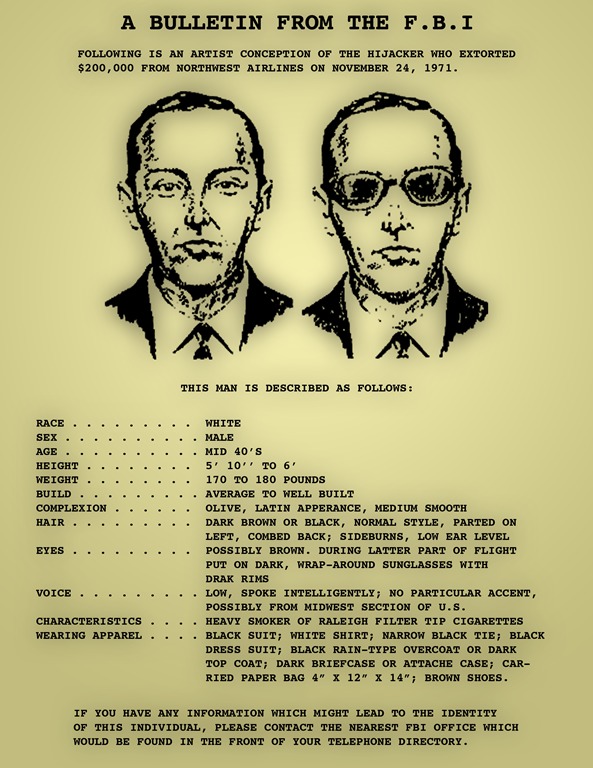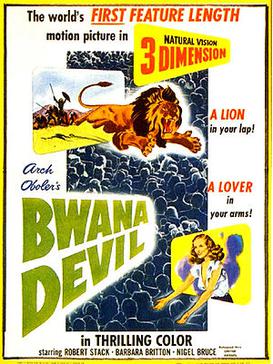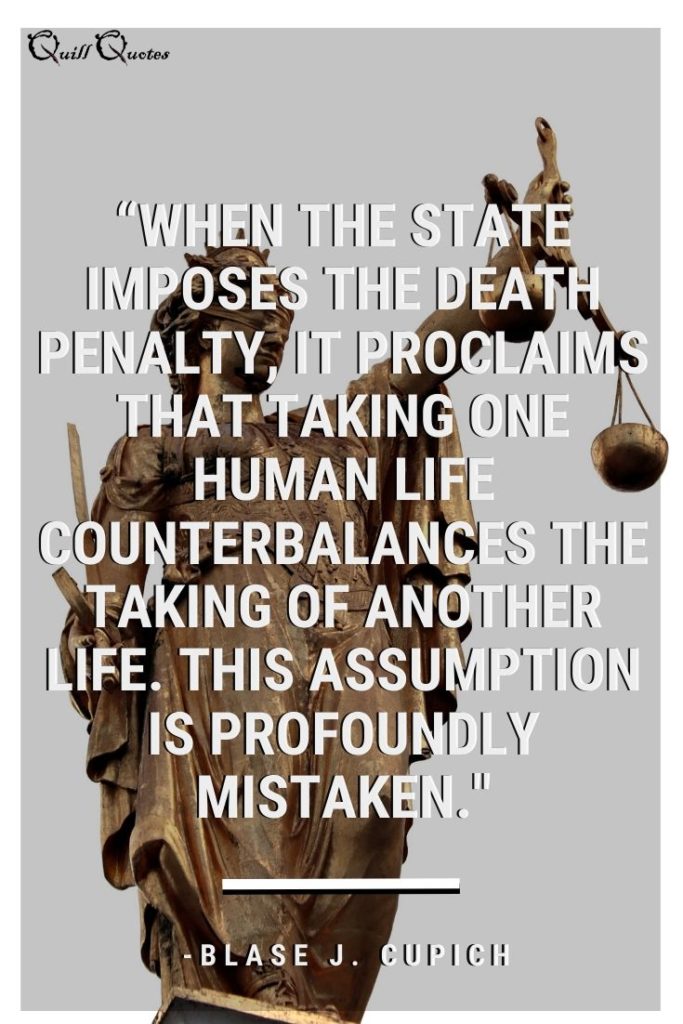There is always much to learn from quotes and their historical significance. Read on for a collection of quotes and general history from November 24th – 30th.

November 24, 1971
“Miss, you’d better look at that note. I have a bomb.”
– D. B. Cooper
On November 24, 1971, D. B. Cooper made his escape by parachute with $200,000 after hijacking a Boeing 727 between Portland, Oregon and Seattle, Washington. The unidentified hijacker purchased the ticket using the alias Dan Cooper, but a media mix-up led to the widely-publicized D. B. Cooper moniker. Although most experts believe he probably didn’t survive the high-risk jump, his remains have never been found. Additionally, only $5,800 of the ransom money was ever recovered, discovered by eight-year-old Brian Ingram on the banks of the Columbia River in 1980. A 45-year FBI investigation, suspended in 2016, and numerous private investigations have failed to definitively uncover Cooper’s true identity and it remains the only unsolved case of air piracy in commercial aviation history.

November 25, 1960
“We cannot allow our children to grow up in this corrupt and tyrannical regime. We have to fight against it, and I am willing to give up everything, even my life if necessary.”
– Patria Mirabal
On November 25, 1960, three of the four Mirabal sisters were assassinated for their opposition to dictator Rafael Trujillo, “El Jefe”, in the Dominican Republic. The three sisters, Patria, Minerva, and María Teresa were known as “Las Mariposas” (“The Butterflies”) within the resistance group. Following their assassinations, they became symbols of resistance and Trujillo’s reign was ended 6 months later in 1961 with his own assassination. The fourth sister, Dedé, was not part of the resistance, but raised her sisters’ six children after their deaths, along with three of her own, and dedicated her life to ensuring her sisters were remembered. In 1999, the United Nations General Assembly designated November 25th as the International Day for the Elimination of Violence against Women in honor of the Mirabal sisters.

November 26, 1952
“The Miracle of the Age!!! A LION in your lap! A LOVER in your arms!”
– Bwana Devil
The first feature-length 3D film, Bwana Devil, premiered on November 26, 1952, at the Paramount Theaters in Los Angeles. The film was based on the true events of the Tsavo maneaters, a pair of lions responsible for killing many construction workers building the Kenya-Uganda Railway in 1898. As the inspiration for several movies, the lions were eventually killed by Lieutenant-Colonel J. H. Patterson, who wrote about the incident in his 1907 book The Man-Eaters of Tsavo. Although unpopular with critics, Bwana Devil was a smashing success with audiences, sparking the first 3D film craze!


November 27, 1945
“I could shoot better.”
– Hannie Schaft
On November 27, 1945, World War II Dutch resistance fighter Hannie Schaft was reburied in a state funeral. Her work with the Raad van Verzet or “Council of Resistance” as a saboteur and assassin earned her a spot on the Nazis’ most-wanted list as “the girl with the red hair.” Although she dyed her hair black, she was arrested at a military checkpoint while transporting secret documentation for the Resistance and was later identified by the roots of her red hair. On April 17, 1945, just three weeks before the end of the war, she was executed by Dutch Nazi officials. When their first shot merely wounded her, her last words are said to have been “I could shoot better!” Schaft is one of only 95 people to receive the Dutch Cross of Resistance and is commemorated on the last Sunday of each November in the Netherlands.
November 28, 1717
“Damnation seize my soul if I give your quarters, or take any from you.”
– Edward Teach, Blackbeard
On November 28, 1717, Edward Teach, better known as Blackbeard, captured the French merchant vessel “La Concorde” and renamed it “Queen Anne’s Revenge”. Equipped with 40 guns, the Queen Anne’s Revenge served as his flagship during the height of Blackbeard’s pirate career. However, after less than a year under his command, he ran the ship aground before accepting a royal pardon. Despite the pardon, Blackbeard soon returned to piracy and was killed on November 22, 1718, following a ferocious battle with Lieutenant Robert Maynard’s crew sent to capture him.
November 29, 1935
“One can even set up quite ridiculous cases. A cat is penned up in a steel chamber, along with the following device (which must be secured against direct interference by the cat): in a Geiger counter, there is a tiny bit of radioactive substance, so small, that perhaps in the course of the hour one of the atoms decays, but also, with equal probability, perhaps none; if it happens, the counter tube discharges and through a relay releases a hammer that shatters a small flask of hydrocyanic acid. If one has left this entire system to itself for an hour, one would say that the cat still lives if meanwhile no atom has decayed. The first atomic decay would have poisoned it. The psi-function of the entire system would express this by having in it the living and dead cat (pardon the expression) mixed or smeared out in equal parts.
It is typical of these cases that an indeterminacy originally restricted to the atomic domain becomes transformed into macroscopic indeterminacy, which can then be resolved by direct observation. That prevents us from so naively accepting as valid a “blurred model” for representing reality. In itself, it would not embody anything unclear or contradictory. There is a difference between a shaky or out-of-focus photograph and a snapshot of clouds and fog banks.”
– Erwin Schrödinger
The Schrödinger’s cat thought experiment was first published on November 29, 1935, by Austrian physicist Erwin Schrödinger to illustrate the problem of the Copenhagen interpretation of quantum mechanics. The hypothetical scenario results in a cat that can be viewed as both alive and dead simultaneously. Schrödinger intended the example to illustrate the absurdity of quantum superposition theory. Today, however, there are many interpretations of quantum mechanics where Schrödinger’s cat is legitimately regarded as both alive and dead simultaneously. In fact, physicists often apply the thought experiment to each interpretation as a way of comparing them.
November 30, 1786
“The death penalty not only takes away the life of the person strapped to the table – it takes away a little bit of the humanity in each of us.”
– Clint Smith
On November 30, 1786, Tuscany became the first civil state in the world to abolish the death penalty under the reign of future Holy Roman Emperor Leopold II. This decision was largely influenced by Cesare Beccaria’s 1764 book On Crimes and Punishments. Since then, numerous other countries and states have also abolished the death penalty with only 56 countries retaining capital punishment. However, more than 60% of the world’s population still lives in countries where the death penalty is legal. Today, November 30th is celebrated as Cities for Life Day around the world in support of the death penalty’s abolition.

In case you missed last week’s quotes, see History November 17th – 23rd.
To never miss a Quill Quotes post, please subscribe via email and/or follow us on social media!
Leave a Reply